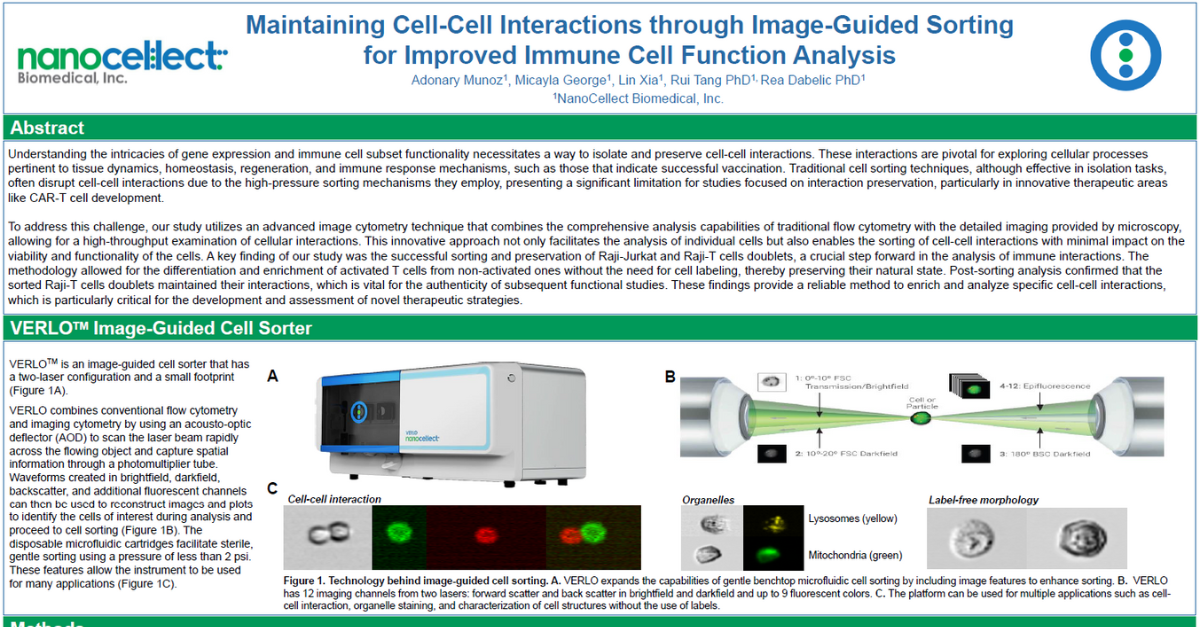Maintaining Cell-Cell Interactions Through Image-Guided Sorting for Improved Immune Cell Function Analysis

Abstract
Understanding the intricacies of gene expression and immune cell subset functionality necessitates a way to isolate and preserve cell-cell interactions. These interactions are pivotal for exploring cellular processes pertinent to tissue dynamics, homeostasis, regeneration, and immune response mechanisms, such as those that indicate successful vaccination. Traditional cell sorting techniques, although effective in isolation tasks, often disrupt cell-cell interactions due to the high-pressure sorting mechanisms they employ, presenting a significant limitation for studies focused on interaction preservation, particularly in innovative therapeutic areas like CAR-T cell development. To address this challenge, our study utilizes an advanced image cytometry technique that combines the comprehensive analysis capabilities of traditional flow cytometry with the detailed imaging provided by microscopy, allowing for a high-throughput examination of cellular interactions. This innovative approach not only facilitates the analysis of individual cells but also enables the sorting of cell-cell interactions with minimal impact on the viability and functionality of the cells. A key finding of our study was the successful sorting and preservation of Raji-Jurkat and Raji-T cells doublets, a crucial step forward in the analysis of immune interactions. The methodology allowed for the differentiation and enrichment of activated T cells from non-activated ones without the need for cell labeling, thereby preserving their natural state. Post-sorting analysis confirmed that the sorted Raji-T cells doublets maintained their interactions, which is vital for the authenticity of subsequent functional studies. These findings provide a reliable method to enrich and analyze specific cell-cell interactions, which is particularly critical for the development and assessment of novel therapeutic strategies.
PST-013
